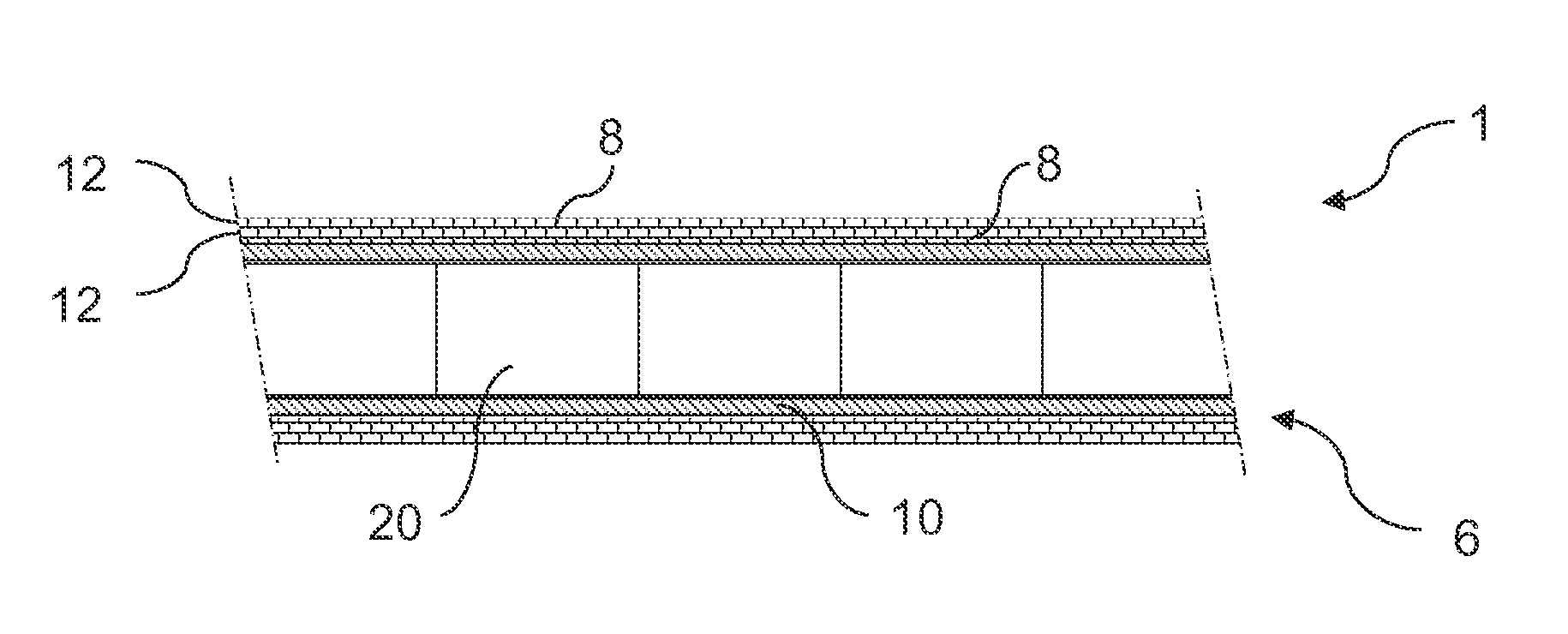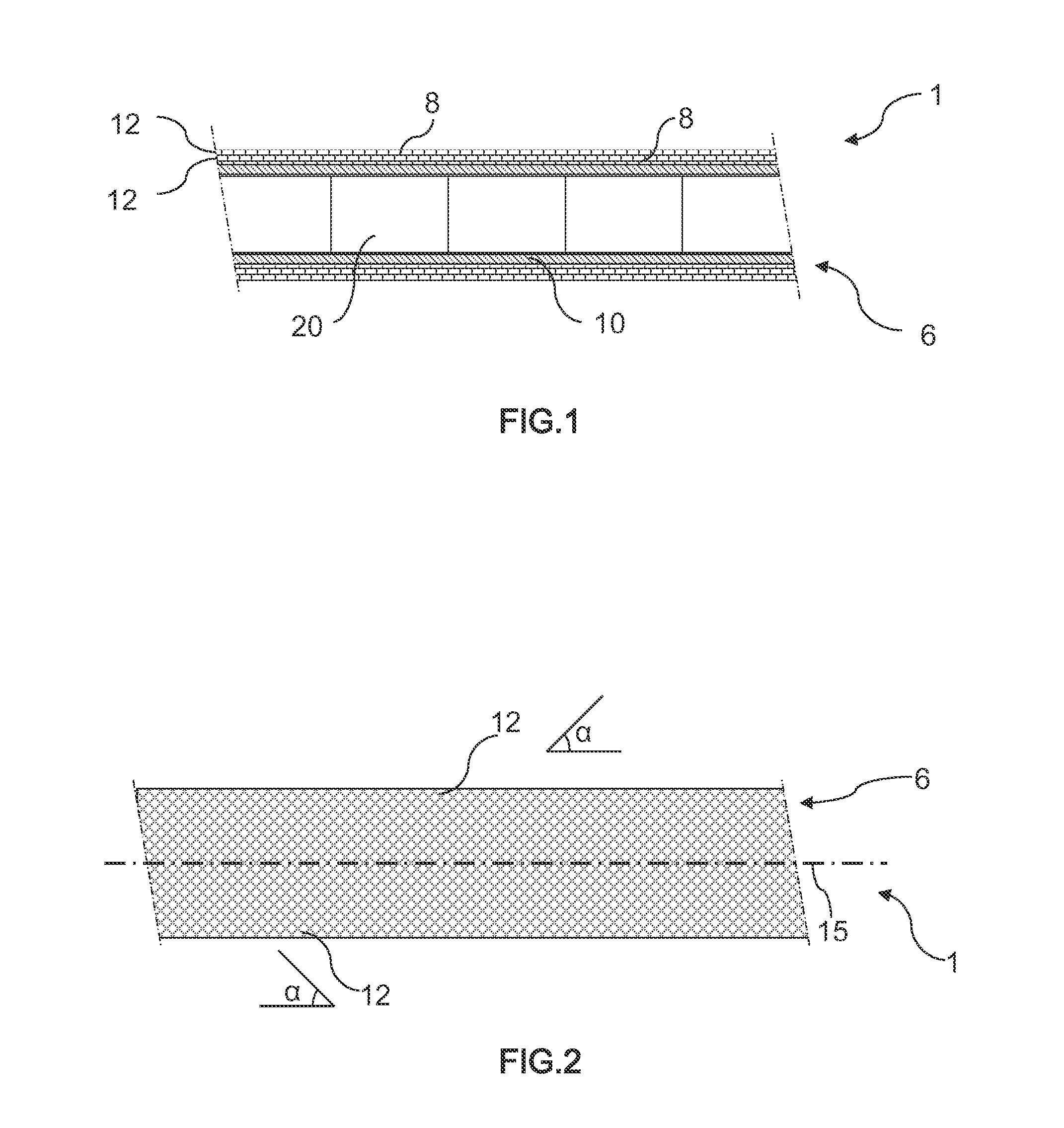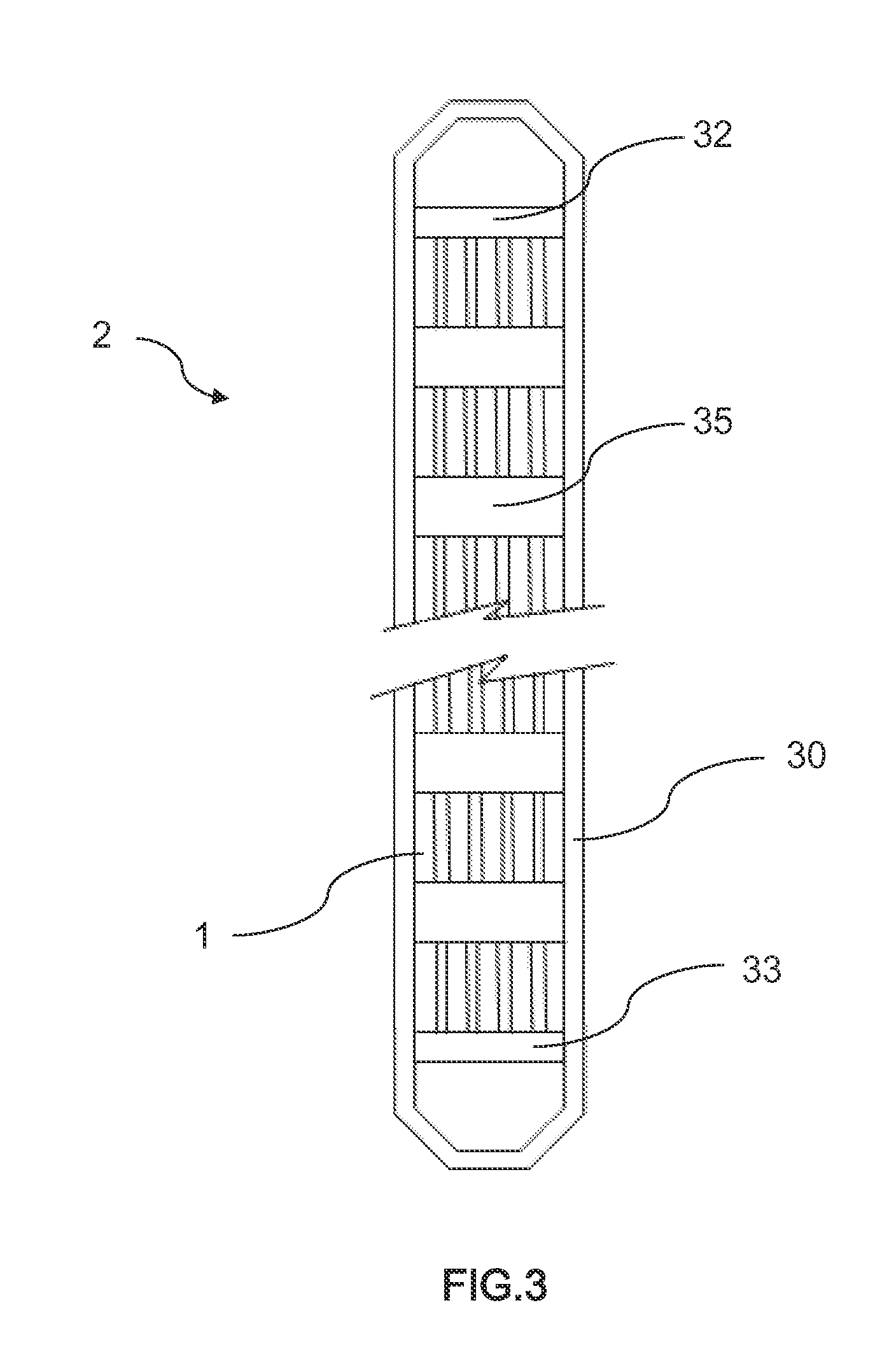Composite Fuel Rod Cladding
a fuel rod and composite technology, applied in the field of composite fuel rod cladding and nuclear fuel assembly, can solve the problems of reducing the mechanical properties bending of the original straight fuel assembly, and different expansion of the material, so as to enhance the structural integrity of the fuel rod cladding, reduce friction between the fibers, and add strength
- Summary
- Abstract
- Description
- Claims
- Application Information
AI Technical Summary
Benefits of technology
Problems solved by technology
Method used
Image
Examples
Embodiment Construction
[0021]The present invention provides nuclear fuel rods 1 formed of a composite ceramic cladding 6 configured to retain nuclear fuel pellets 20 therein in a known manner. Silicon carbide (SiC) is a preferred ceramic material. As illustrated in FIG. 1, the composite ceramic cladding 6 comprises a tube 10 covered by a number of layers 12 of fibers 8 spun around the tube 10. Preferably, the fiber layers 12 are placed about the tube 10 in varying directions, enhancing the strength of the fuel rod 1. For example, as shown in FIG. 2, the fiber layers 12 may be arranged iii a direction non-parallel with the fuel rod longitudinal axis 15 at an angle α that is between approximately 30° to 70° relative the longitudinal axis 15. (It should be noted that for the sake of clarity, only a single fiber 8 per fiber layer 12 is illustrated in FIG. 2.) Subsequent fiber layers 12 preferably are placed atop the previously placed fiber layer(s) 12 such that the additional fiber layer 12 is non-parallel to...
PUM
| Property | Measurement | Unit |
|---|---|---|
| aspect ratio | aaaaa | aaaaa |
| relative angle | aaaaa | aaaaa |
| angle | aaaaa | aaaaa |
Abstract
Description
Claims
Application Information
 Login to View More
Login to View More - R&D Engineer
- R&D Manager
- IP Professional
- Industry Leading Data Capabilities
- Powerful AI technology
- Patent DNA Extraction
Browse by: Latest US Patents, China's latest patents, Technical Efficacy Thesaurus, Application Domain, Technology Topic, Popular Technical Reports.
© 2024 PatSnap. All rights reserved.Legal|Privacy policy|Modern Slavery Act Transparency Statement|Sitemap|About US| Contact US: help@patsnap.com










